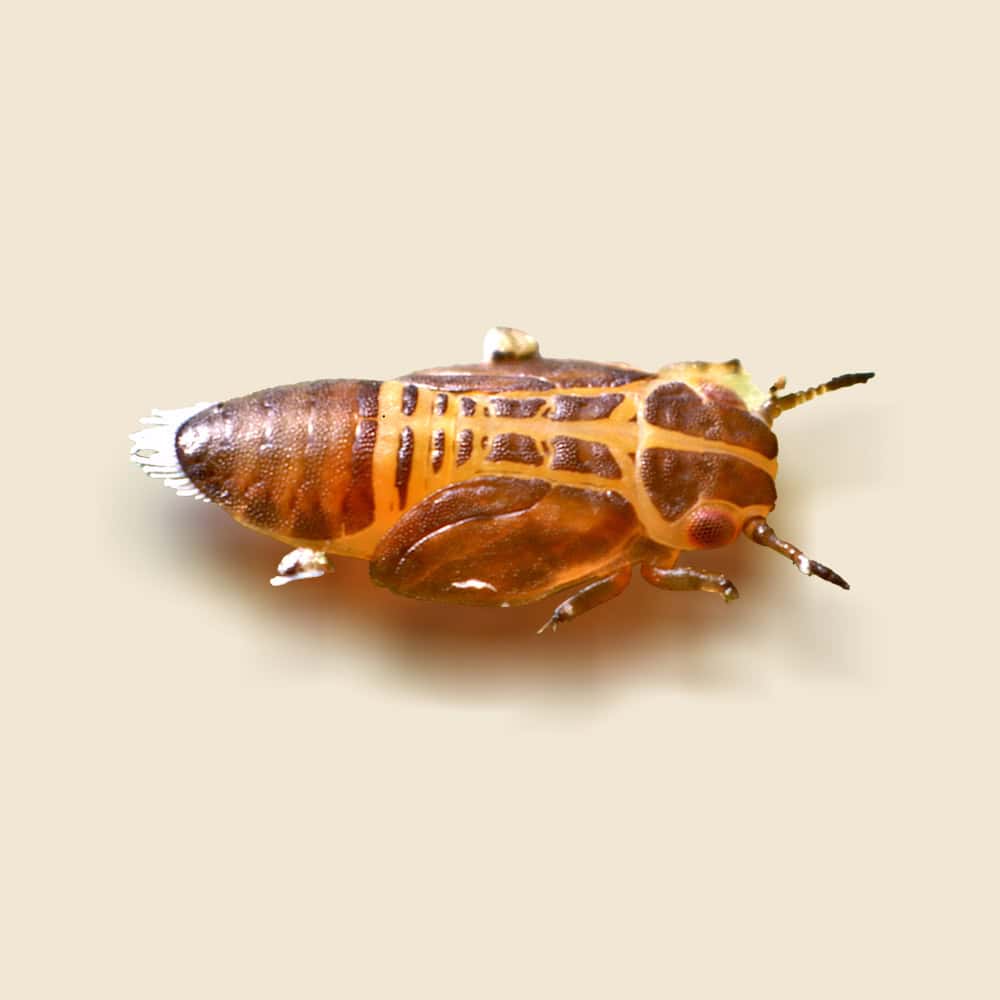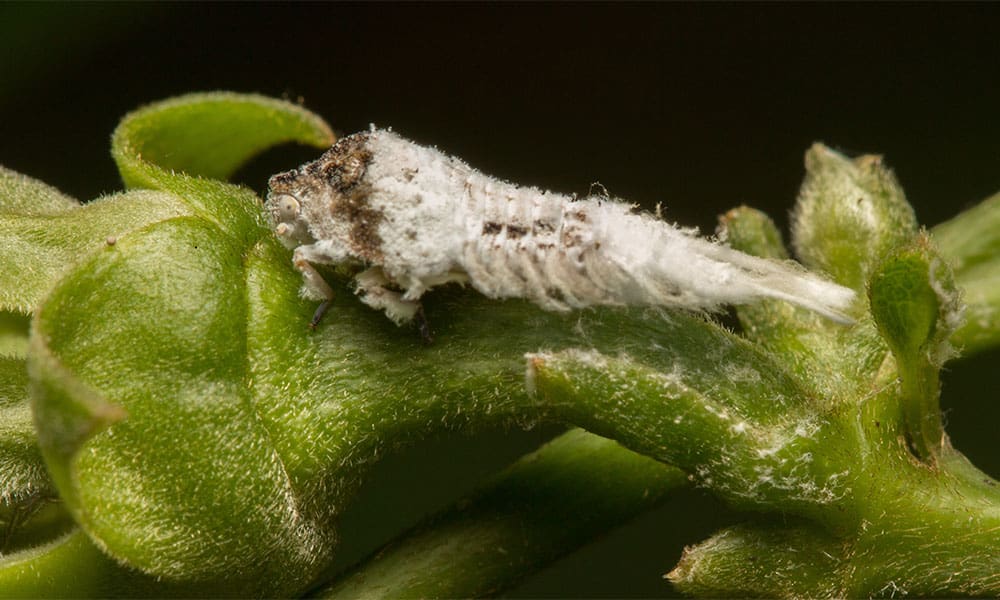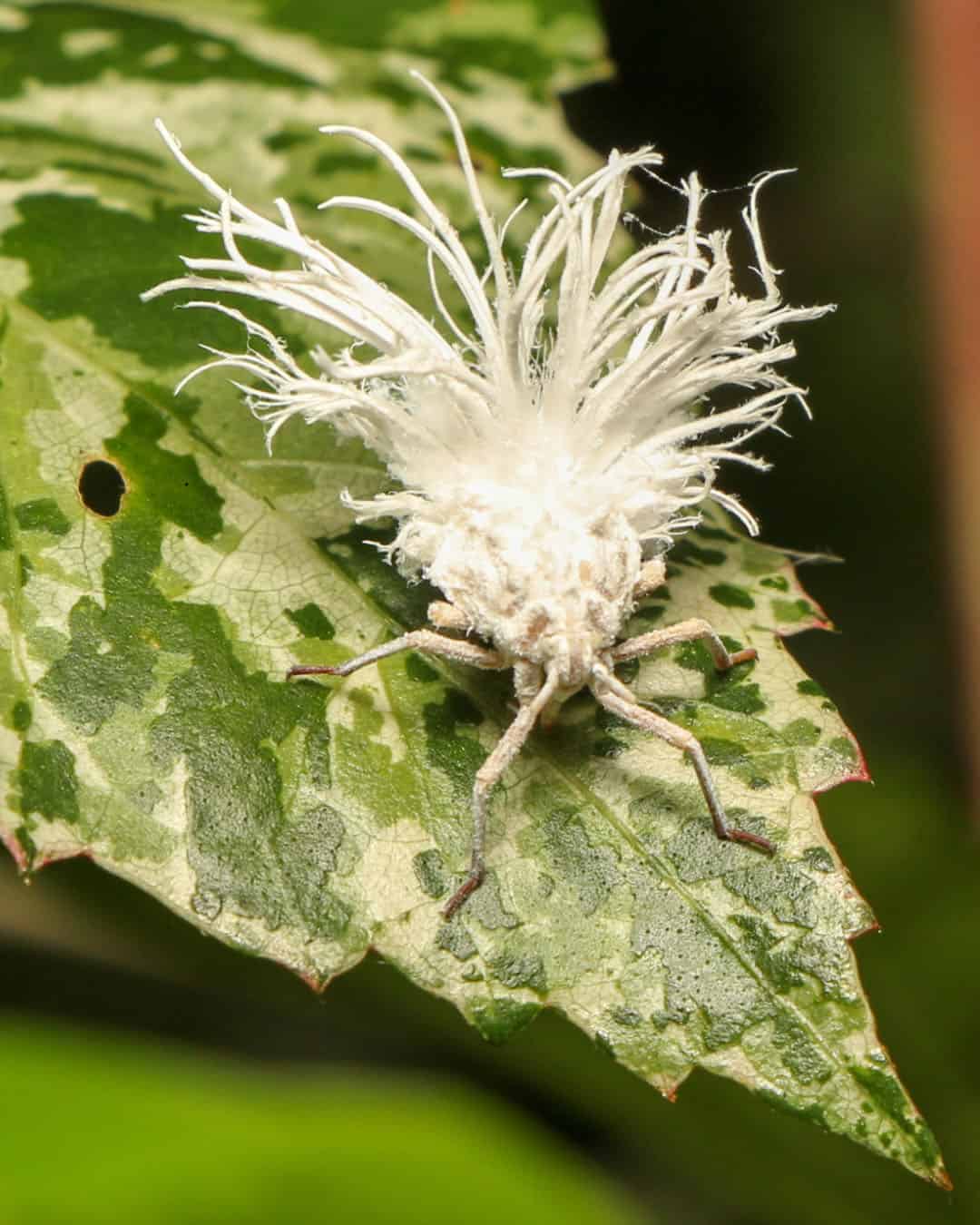Psyllid Facts & Information
Psyllids, also known as plant lice, are small sap-sucking insects that can cause significant damage to a variety of plants, including fruit trees, ornamentals, and crops. These pests are known for transmitting plant diseases and can lead to reduced plant vigor and productivity.

Psyllidae
What You Need To Know About Psyllids
What do psyllids look like?
Psyllids, also known as jumping plant lice, are small insects resembling miniature cicadas. They are usually about 1/10 to 1/5 inch in length and have a robust, pear-shaped body with clear or slightly tinted wings. They can be green, yellow, brown, or gray.
What do psyllids eat?
Psyllids feed on plant sap. They use their piercing-sucking mouthparts to extract sap from the leaves, stems, and young shoots of their host plants. Different species of psyllids are host-specific and may feed on a variety of plants, including fruit trees, vegetables, and ornamental plants.
What sort of habitat do psyllids live in?
Psyllids are found in a variety of habitats, depending on their host plants. They can be found in gardens, orchards, forests, and nurseries. They are commonly associated with specific plant species, which they rely on for feeding and reproduction.
How do psyllids commonly behave?
Psyllids are known for their jumping ability, similar to that of fleas. They are typically active during the warmer months and can reproduce rapidly, leading to large populations. They lay eggs on their host plants, and the nymphs feed on the sap, often causing damage to the plant.
Did you know this about psyllids?
Psyllids can be significant agricultural pests, causing damage to crops and ornamental plants by feeding on sap and transmitting plant pathogens. One well-known example is the Asian citrus psyllid, which transmits the bacterium causing citrus greening disease (Huanglongbing), a serious threat to citrus production worldwide. Additionally, psyllids excrete a sugary substance called honeydew, which can lead to the growth of sooty mold on plants.
Understanding Psyllid Infestations
Understanding psyllid infestations is crucial for effective management. Psyllids feed on the sap of plants, injecting toxic saliva that can cause leaf curling, yellowing, and stunted growth. They also excrete honeydew, which can lead to sooty mold growth. Infestations can spread rapidly, making early detection and treatment essential.

How Hearts Handles Psyllid Treatment
Hearts Pest Management employs an integrated pest management approach to handle psyllid infestations. Our process begins with a thorough inspection to identify infested plants and assess the extent of the problem. We then develop a customized treatment plan that may include cultural practices, biological controls, and targeted insecticide applications, ensuring the health and vitality of your plants.
Psyllid Inspection
Psyllid Treatment
Psyllid Prevention
Educational Resources

Think You Might Have a Psyllid Infestation?
At Hearts Pest Control, we understand the challenges associated with Psyllid infestations and are here to provide professional solutions tailored to your needs. Flourishing in warm and humid climates, they are prevalent in many regions, including San Diego County, Orange County, and Los Angeles County.